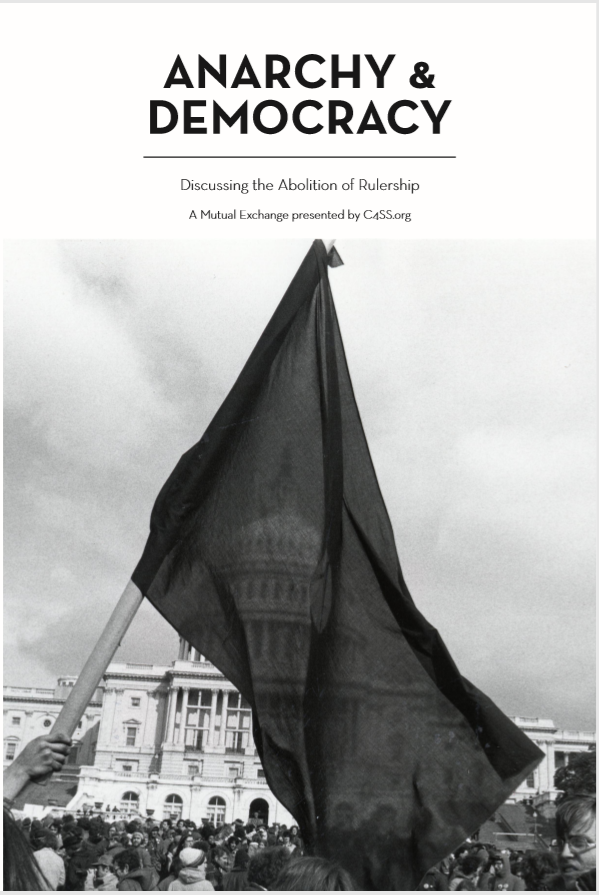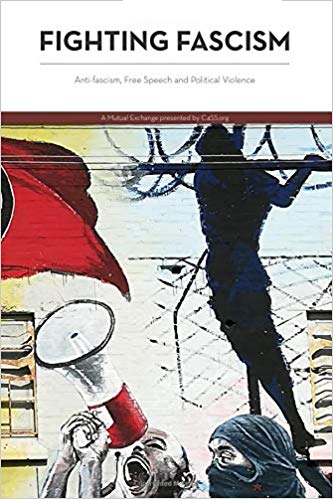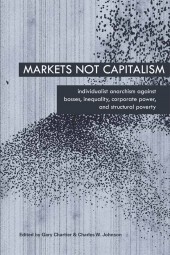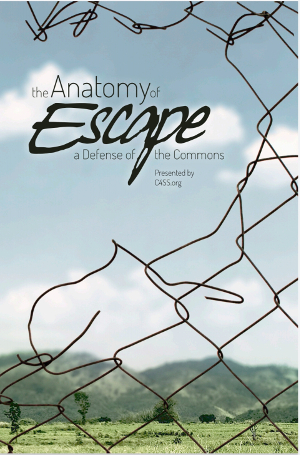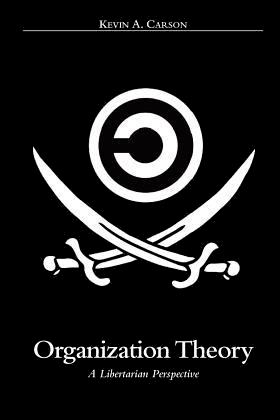Abbattere le frontiere, andare oltre lo stato nazione
Di Leif J. Originale pubblicato il 12 agosto 2019 con il titolo No Citizens: Abolishing Borders Beyond the Nation-State. Traduzione di Enrico Sanna.
La semplice esistenza delle frontiere rappresenta una delle fondamentali ingiustizie del mondo. Molti lo riconoscono implicitamente, inutile ripetere quello che è stato spiegato da generazioni di anarchici: frontiere e nazionalità sono elementi costitutivi dello stato nazione e come tali devono essere eliminati e superati. Lo stato dipende dall’esistenza di un territorio definito in cui esercitare il monopolio della forza. Quindi rivendica il potere su un certo numero di persone, definite “cittadini”, contrapposte ai cittadini degli stati vicini. Frontiera e nazionalità definiscono l’“esterno” in opposizione al quale si definisce il concetto statale di identità. Per un anarchico, la frontiera significa due cose. Primo, che la lotta per la libertà comprende necessariamente la libertà di movimento. Secondo, che le frontiere nazionali – in quanto elementi costitutivi dello stato – sono tra gli obiettivi principali, il luogo in cui è costantemente visibile l’impossibilità dello stato, il luogo in cui migranti e altri sfidano continuamente il potere dello stato. La frontiera è, è stata e auspicabilmente sarà sempre, un’impossibilità, una finzione imposta dalla pianificazione statale su una realtà altrimenti troppo caotica, ostile alle divisioni. Ma è anche il punto chiave in cui lo stato lotta per imporre una sua particolare versione di ordine. È molto importante lottare contro le frontiere fisiche, ma anche contro la loro logica sottostante.
Assistiamo di questi tempi all’ultima di una lunga serie di “crisi migratorie” create dallo stato, con relative richieste di abolire l’Ice (istituzione americana per il controllo delle frontiere); una crisi che genera aspettative, ottimistiche o totalitarie, riguardo la mobilità umana nell’America del nord. Dato il contesto, è importante non perdere di vista l’obiettivo. In questi ultimi decenni, quella “frontiera” che immaginavamo come una linea che divide gli Stati Uniti dal Messico ha cambiato forma, è diventata un’ampia area di controllo che va dal territorio messicano ad un ampio entroterra americano. Di fatto, oggi la frontiera è ovunque, un dispositivo di cernita che separa i cittadini dai non cittadini. Le prime “norme sulle frontiere” le troviamo nelle leggi sull’Esclusione dei Cinesi, d’ispirazione chiaramente razziale. L’attuale isteria nazionalistica si ispira agli stessi principi. La frontiera degli Stati Uniti è in ogni aeroporto, nei posti di blocco autostradali lontani da qualunque confine territoriale, nei raid dell’Ice negli autobus e sui posti di lavoro; e, infine, nel poliziotto in quanto attuatore della politica migratoria. In alcune località, i controlli di frontiera possono essere attivati anche da procedure burocratiche obbligatorie e apparentemente innocue: un incontro con il personale scolastico, con un amministratore ospedaliero o altri elementi dello stato possono essere l’occasione di un controllo. Quando diciamo che siamo contro le frontiere, intendiamo ovviamente che siamo contro tutto ciò, contro quell’apparato che divide chi sta di qua da una linea da chi sta di là.
Almeno questo dovrebbe essere fuori discussione. Ma attaccare la logica delle frontiere nazionali non basta. Molti, anarchici e non, fanno fatica ad ammetterlo, ma il localismo pervade anche la sinistra quando, in risposta alla politica esclusionistica insita nel concetto di nazionalità, spesso si riduce a chiedere una nazionalità formale (locale) che includa gli immigrati. Troppo spesso, alle frontiere nazionali si reagisce proponendo arrangiamenti urbani o zonali che riproducono il problema a scale diverse. Quando invece occorrerebbe essere cosmopoliti nel vero senso della parola: contro una nazionalità formale e per una libertà d’associazione e di movimento. La critica anarchica deve essere portata avanti a tutti i livelli.
Nessun Santuario: La Residenza che non Risolve
In risposta alla crescente ondata nazionalista e antimigratoria si è diffusa la pratica di convertire un certo centro urbano in città “santuario”. Solitamente implicita è la promessa che la polizia non coopererà con le autorità federali sull’immigrazione. Talvolta si fornisce anche un documento di identità a non-residenti e immigrati illegali al fine di agevolarne l’interazione con le autorità locali. Ci sono casi in cui le autorità statali, cittadine o universitarie operano esplicitamente al fine di nascondere alle autorità federali gli immigrati senza documenti rendendoli indistinguibili dagli altri. Bisogna però dire che l’impegno a non collaborare raramente arriva dove dovrebbe. Sono rari i casi come quello del sindaco di Oakland che avvisa dell’imminenza di un raid, o del sindaco di Madison, nel Wisconsin, che ha condannato i raid antimmigrati, o ancora del sindaco di Chicago che recentemente ha dichiarato di non voler collaborare con le autorità migratorie. E ad ogni buon conto, in molti casi la polizia locale è costretta da ordini superiori a collaborare con le autorità federali.
È però importante capire che queste pratiche hanno la loro importanza; le politiche cambiano, con chiari effetti positivi per le persone senza permesso e in generale per chi non ha la cittadinanza, e la pratica delle città santuario è una protezione dalla politica migratoria per molte persone, potenzialmente milioni, senza documenti. Allo stesso tempo, però, ridimensionano il concetto di nazionalità portandolo dallo stato alla città, creando quindi una nazionalità di genere diverso. In un clima che è tra i più ostili all’immigrazione della storia moderna, la mossa potrebbe essere strategicamente importante al fine di proteggere le comunità in assenza di un’abolizione totale delle frontiere e della nazionalità. Ma è bene chiarire che gli aspetti negativi insiti nel concetto di nazionalità non si attenuano portandoli a livello locale.
Prima di tutto, questo ridimensionamento genera frontiere locali e spesso, più che proteggere, minaccia i soggetti. Secondo una ricerca, il 70% di queste politiche è più restrittivo che protettivo. Se da un lato si cita qualche esempio notevole, dall’altro le autorità locali cercano spesso il modo di espandere la propria autorità, di andare oltre i controlli federali, e molte volte queste iniziative dal basso sono più apertamente razziste di quanto non siano potenzialmente quelle nazionali, anche di quelle dell’attuale regime.
Secondo, cosa più importante, nella sostanza lo stato nazione non si differenzia da altre forme di governo su scala diversa. Pensiamo, ad esempio, ai controlli migratori fuori dagli Usa e la Ue. La realtà delle città cinesi, ad esempio, apparentemente lontana dalla frontiera tra gli Usa e il Messico, rivela strategie molto simili nella “gestione” degli spostamenti di oltre 120 milioni di lavoratori, e questo in un paese nominalmente socialista e nonostante il fatto che i migranti in questione probabilmente non attraverseranno mai una frontiera nazionale. I migranti, molti dei quali provengono dalle campagne impoverite per andare a lavorare nelle industrie per una miseria, rappresentano una classe giuridicamente a parte, esclusa da molti servizi cittadini come la scuola pubblica e l’assistenza sanitaria.
Alla fine del 2017, Pechino ha avviato una campagna diretta esplicitamente a mandare via i migranti dalle città, anche demolendo aree residenziali ad altra presenza di migranti, senza preavviso e senza piani di reinsediamento. Le leggi attuali vietano di fatto l’ottenimento della residenza nelle città di Shangai, Pechino e Guangdong per la stragrande maggioranza dei migranti, che in totale fanno tra il 35% e l’80% della popolazione di queste città. La residenza è negata anche ai loro figli nati nella città, i migranti di seconda generazione mantengono lo status dei genitori. Mi spiegava qualcuno che la residenza si può ottenere o col matrimonio o col denaro. Oltre a questo, ci sono tanti altri esempi (dall’apartheid sudafricano ai ghetti americani) che dimostrano come sia possibile creare frontiere, dall’impatto devastante, a livelli diversi da quello nazionale.
L’esistenza di queste città blindate dovrebbe come minimo farci riflettere prima di dire che la città rappresenta la dimensione ideale di una politica liberatoria. Certo è difficile immaginare la città di San Francisco racchiusa in una frontiera politica in grado di creare una sorta di apartheid tra la città e, poniamo, Oakland (o il Wyoming), ma le autorità cittadine non hanno nulla che le renda a priori meno esclusive o meno oppressive dell’attuale governo federale. Programmi che offrono i benefici della residenza a chiunque, a prescindere dalla nazione di provenienza, possono essere d’aiuto, ma non fanno altro che replicare la logica dell’appartenenza esclusiva ad un luogo, una logica a cui è difficile sfuggire se non abolendo il principio stesso di nazionalità.
Frontiere Frattali: Dove guarda il filo spinato?
Qualche anarchico greco ha coniato l’espressione “ogni poliziotto è una frontiera”, che si può interpretare in due modi. Primo, il poliziotto è sicuramente un elemento chiave del sistema, e il contatto con la polizia è il primo passo che porta un sans-papier negli Usa e in gran parte dell’Europa verso la procedura di rimpatrio. La collaborazione della polizia ha permesso all’amministrazione di Obama di espellere più persone di quanto non avesse fatto Bush. Questi accordi collaborativi sono ancora attivi con Trump, mentre cresce la violenza dell’Ice e si moltiplicano i raid nelle case e nei luoghi di lavoro.
Ma il poliziotto rappresenta una frontiera anche in un altro senso, in quanto forza di occupazione che in tutto il territorio nazionale uccide e deporta persone povere o di colore. Sulla carta, le leggi distinguono tra espulsione e reato penale. La prima dovrebbe teoricamente essere una misura “non punitiva”, anche se divide le famiglie e confina i bambini; la seconda una misura riabilitativa. Vediamo chiaramente, però, come il confinamento insito nel nostro enorme sistema carcerario tracci un confine, isoli legalmente e fisicamente una grossa fetta della popolazione, sproporzionatamente nera e ispanica, dai loro affetti. Alla fine, sia l’espulsione che il carcere di massa pongono la persona dalla parte sbagliata del muro.
A questo punto, sulla questione possiamo avanzare un’ipotesi che chiunque dovrebbe essere in grado di comprendere intuitivamente: per capire come funziona il potere in termini geografici, basta osservare la direzione verso cui è rivolto il filo spinato. Da un lato, il reticolato sul confine sud degli Stati Uniti guarda verso l’esterno, apparentemente per proteggere i cittadini all’interno dalle minacce provenienti da oltreconfine, ma dall’altro, se osserviamo bene, vediamo il filo spinato che in tutto il territorio nazionale circonda ogni penitenziario. Con linguaggio abolizionista si definisce solidarietà dentro/fuori quella solidarietà tra chi sta “dentro” e chi sta “fuori” dal carcere, nello spazio (più) libero creato per i cittadini. Possiamo immaginare il carcere come un arcipelago composto da tanti “fuori”. Il carcere non è un luogo “dentro” la società controllata dallo stato; è il luogo in cui lo stato pone gli esclusi, quelli la cui esistenza minaccia l’ordine e la legge della proprietà capitalista. Il carcere serve a tenere fuori dalla società chi è “fuori dalla legge”.
Detto in termini più generali, si potrebbe tracciare una fedele topologia del muro che divide nettamente “dentro” e “fuori”, comprendendo non solo le frontiere nazionali e le carceri, ma anche quelle meno evidenti ma non meno importanti strutture edilizie della vita quotidiana, dalle zone residenziali chiuse (che racchiudono un’isola di ricchezza in un mare di povertà) al muro che nella mia città circonda un quartiere popolare, isolandolo dai circostanti quartieri bianchi e ricchi. In ognuno di questi casi, il muro ha una direzione chiara e visibile: serve a tenere gli “esterni” fuori dal mondo costruito sul concetto di nazionalità. Vista l’insistenza con cui sono imposte, si possono vedere queste frontiere non come linee chiaramente tracciate su una mappa a dividere il territorio dello stato, bensì come un insieme di spazi frattali profondamente intrecciati, che ripetono spazialmente la stessa logica in scale diverse.
In questo mondo, in cui ogni poliziotto è una frontiera e lo spazio un groviglio frattale, un arcipelago di muri visibili e invisibili, il compito di ognuno, dentro e fuori, è di smantellare questi muri, un mattone dopo l’altro. Abolizione delle frontiere significa inevitabilmente abolizione delle carceri, giustizia per la popolazione segregata, che la politica delle frontiere ha separato dalle amicizie, dalle famiglie, dalle comunità. Quelle che seguono sono alcune note preliminari ad un programma di sabotaggio di questo mondo fatto di intricate frontiere frattali.
Eliminare la Cittadinanza, Eliminare Tutte le Frontiere
Impegno cruciale dell’organizzazione anarchica è la lotta alle frontiere condotta a più livelli. Lottare contro le frontiere imposte dallo stato, però, non basta. Se vogliamo elaborare una politica prefigurativa, che cominci a edificare il nuovo mondo nel guscio decrepito del vecchio, occorre trovare un modo per andare oltre la logica delle frontiere. Attaccare direttamente le strutture è facile e sicuro (non sarebbe male se ogni notte distruggessimo una barriera con cesoie e dinamite finché non rimane più nulla), se non fosse che il nostro concetto di liberazione è perseguitato dallo spettro della cittadinanza e dell’appartenenza. Secondo l’ottica politica statalista, il concetto di cittadinanza ha connotazioni sicuramente positive. Essere cittadini significa possedere un’identità che “ci” unisce. La cittadinanza è il fondamento del presunto “contratto sociale”, un insieme di obblighi reciproci, o anche qualcosa che ricorda molto il concetto anarchico di affinità. A differenza di quest’ultimo, però, il concetto di nazionalità richiede un “fuori” contro il quale definire il cittadino: chi non condivide lo stesso stato, chi non è interessato da quella finzione che è il “contratto sociale”, base del suo sfruttamento, chi non lo rispetta, chi non è considerato umano da chi ha il potere di definire la nazionalità e i suoi esclusi.
Il fatto è che immaginare una comunità che non si basi sull’esclusione non è così facile come si pensa. Anche per inevitabili questioni di differenza e distanza, oggi invise ma impossibili da “sconfiggere” o da neutralizzare. È facile cascare nella trappola e pensare in termini di frontiere; molte delle nostre idee pratiche riguardo la partecipazione e la creazione di una comunità spesso tendono a riprodurre le basi teoriche della nazionalità. Per quanto le nostre intenzioni siano cosmopolite, la logica alla base della nostra pratica è spesso influenzata dal localismo, il regionalismo e l’edificazione di una comunità (esclusiva). Per quanto allettanti e temporaneamente utili, questi concetti tendono a riprodurre la struttura gerarchica della cittadinanza, per cui l’identità di chi sta “dentro” una comunità, un collettivo, una comune o un’organizzazione viene definita tramite l’esclusione di chi sta fuori.
Oltre la Logica delle Frontiere
Non esiste un consiglio risolutivo o un insieme di strumenti con cui creare movimenti, programmi o affinità in grado di abbattere le frontiere. Il compito è arduo. Da un lato, puntiamo a moltiplicare le differenze piuttosto che cancellarle: anarchico o no, lo schema zapatista di “un mundo en que quepan muchos mundos”, un mondo che contenga molti mondi, è molto utile. Dall’altro lato, siamo decisamente contrari alla nascita di un mondo dalle frontiere ancora più frattali, in cui sottoculture militanti balcanizzate custodiscono gelosamente porzioni minuscole di spazio fisico o culturale. Alla fine, un rifiuto attento della logica delle frontiere e della cittadinanza potrebbe essere lo strumento più potente a nostra disposizione. Oltre a ciò, però, vorrei offrire alcuni strumenti che siano elementi di un’azione anarchica che voglia impedire l’estendersi della logica delle frontiere.
Affinità: Da secoli gli anarchici si organizzano in termini di associazioni basate sull’affinità. È un concetto logoro, ma offre una forte critica alla tendenza impulsiva a costruire e difendere organizzazioni stabili, solide e centralizzate, da difendere dagli “esterni”, in cui l’interesse a mantenere lo spazio fisico, culturale o concettuale di tali organizzazioni è minore. Nel migliore dei casi, un’organizzazione basata sull’affinità permette quella collaborazione aperta che riconosce e ammette le differenze. Puntando non sul riconoscimento di chi è dentro e il discredito di chi è fuori, ma piuttosto su una semplice questione di affinità (o meno) con il fine comune del gruppo, il principio di affinità limita la possibilità che si formi una gerarchia di tipo interno/esterno. Idealmente, puntando su particolari affinità, l’organizzazione potrebbe finire per operare attraverso le differenze, irrobustendosi proprio grazie alla diversità. Purtroppo, il nostro modo di organizzarci raramente si dimostra all’altezza di questi principi.
Solidarietà: Il concetto classico di solidarietà (la mia liberazione è legata alla tua a prescindere dalle distanze) è uno strumento utilissimo se vogliamo riconoscere l’impossibilità delle frontiere. Dalla solidarietà dentro/fuori di chi lotta per abolire le carceri, agli ormai tradizionali striscioni di protesta, agli assalti spontanei alle ambasciate per esprimere solidarietà con gli anarchici in carcere vicini e lontani, fino alla solidarietà diretta con gli immigrati che sfidano il deserto e le mareggiate, il suo meglio la solidarietà lo esprime quando costruisce ponti che scavalcano le frontiere, quando apre le comunità e le idee ad una possibilità di vita in comune che non sia ingabbiata in concetti come “noi” e “loro”. Se è vero che la lotta deve essere condotta nel luogo in cui ci si trova, è però anche vero che nessuno vive in luoghi che non siano toccati dai lunghi tentacoli dello sfruttamento, e pertanto le nostre lotte non possono prescindere dalla coscienza di ciò.
Traduzioni: Non mancano gli anarchici che traducono testi da diffondere internazionalmente, ma occorre anche riconoscere che è importante edificare una cultura che vada oltre la semplice traduzione, agendo caoticamente attraverso le differenze di natura linguistica e altro. Troppo spesso per “traduzione” si intende un lavoro misterioso svolto da esperti, che traslano un significato cristallizzato il più direttamente possibile da un linguaggio purificato e raffinato ad un altro altrettanto purificato e raffinato. Da anarchici, dobbiamo scartare quest’idea. La traduzione, intesa come operare tra le frontiere, è uno strumento di enorme valore che va a sabotare la logica delle frontiere e le sue manifestazioni fisiche e politiche.
Molti di noi sono già impegnati nella lotta contro le frontiere. A bordo di navi nel Mediterraneo, nei campi per immigrati in Messico, nei deserti al confine meridionale degli Usa e ovunque davanti alle porte delle prigioni, anarchici e antiautoritari lottano per un mondo in cui ci sia libertà di movimento, senza stati nazione con le loro linee arbitrarie tracciate a dividere la terra, le famiglie, le persone. Noi svolgiamo questa nostra opera e sogniamo un futuro in cui sia possibile esprimere vere affinità, e allo stesso tempo combattiamo non solo le frontiere fisiche, ma anche la logica che le ha generate. Possiamo agire solo in un punto – una regione, un quartiere, una comunità, un’identità – ma non dobbiamo scivolare nel localismo reazionario. Non possiamo lasciare che la logica delle frontiere si infiltri nell’organizzazione di un bene comune, così che questo appaia in opposizione a chi non ne fa parte. Una rete solidale di quartiere dovrebbe essere aperta a chiunque viva nel quartiere, a prescindere dalla nazionalità di provenienza, ma dovrebbe anche evitare di ricreare in piccolo meschini nazionalismi. Spesso le nostre azioni riflettono queste aspirazioni, il che si traduce in collettività aperte e flessibili che sono l’opposte dell’attuale ordine delle cose. È però ancora troppo facile cadere nella trappola di un pensiero localistico, che porta a pensare a se stessi dimenticando gli altri. Che il nostro lavoro riguardi la solidarietà con i migranti o meno, possiamo rafforzare il movimento evitando che la nostra opera si cristallizzi in un’organizzazione rigida, infondendo principi di solidarietà in tutto quello che facciamo e accentuando l’esportazione e l’esportabilità della nostra versione della lotta possiamo rafforzare il movimento, che si concentri sulla solidarietà ai migranti o meno. Rinchiudersi in un localismo fortificato serve solo a dare vigore alla logica delle frontiere.



